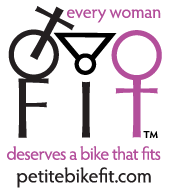All kinds of people are calling themselves bikefitters. Physical therapists and Chiropractors have even joined the ranks, and are now offering these services from their offices. How would one of their fits differ from one I can get from the guy (or gal) who works at my local bike shop?
In addition to my chiropractic education, I have been fortunate enough to attend both the Trek Fit Services Level One Class, as well as the Specialized Level one BG (Body Geometry) Fit class. Both companies have designed their classes around sound and widely accepted bikefitting practices. However, Specialized offers a more comprehensive, methodical approach compared to the competition. They’ve worked with Dr. Andy Pruitt from the Boulder Center for Sports Medicine to come up with a system that, after three intensive days of training and a suitcase of tools, will transform the average bike shop salesman or mechanic, into a qualified bikefitter. Their technique works from the feet up, and is included in their level one course.
In fact, this is where Specialized’s training excels. Once the basic contact points of the bicycle are adjusted to your body, the fit then focuses on your body’s interaction with the correctly adjusted bike—in some circles referred to as a 3-D fit.
The Specialized bikefitter is trained to observe how biomechanically sound you are on your bicycle. That is, are you sitting squarely on the saddle and are your knees tracking efficiently?
They learn which biomechanical adjustments will enhance your connection with the bike and create a more efficient machine that is less prone to injury.
Trained Specialized BG bikefitters don’t necessarily have the same detailed knowledge of anatomy or the refined observation skills of a medical professional, however they have learned to recognize and correct foot problems as they relate to cycling– which is something I didn’t learn during my four years of Chiropractic education. In cases where there maybe a more complex underlying medical condition, Specialized bikefitters are taught to refer their clients to a doctor or physical therapist.
I was thoroughly impressed with the level of teaching, the visual aids and resource materials provided to each student at SBCU (Specialized Bicycle Components University). I’m a seasoned student, and even for me, the hours were long (8am-7pm) and crammed full of information both in the classroom as well as the fit lab, where students spent a full twelve hours doing fittings on one another. Scott Holz’s experience and skill as an instructor and premier bike fitter of many Tour de France riders was impressive.
The bikes used for sizing and fitting during the SBCU class were their finest carbon models. For my sample fitting, I chose the Ruby in the smallest size manufactured, a 44 cm frame with 700c wheels. I chose the Ruby because it most closely matched my riding style and is designed to “make the long road feel short.”
Determining what made my legs so wobbly and inefficient during the pedal stroke was the most impressive portion of the fit, yielding the most significant results. With cleat adjustments, shims and new foot beds, the effect was to sure up my legs thereby adding stability, and efficiency, which directly translated to greater force on the pedals and improved performance. No other bike fitter has ever taken the time to address this integral relationship of me to my bicycle.
The overall training for this course was exceptional, and could be easily applied to fitting a petite woman—especially if she were on the correctly sized bicycle, and the fitter had a wider assortment of shorter stems at his or her disposal than were available in the BG fit lab. Unfortunately, neither Trek or Specialized even consider crank arm length in their fit assessment.
Which brings me to an important observation about one’s handlebar position…
Determining the correct distance to the handlebars is a much more subjective adjustment than those involving the lower extremities. My ongoing concern is the tendency of many bikefitters to approach the upper body portion of the fit to some ideal of what the rider’s potential core strength could be, instead of fitting them to their current level of conditioning. Specialized’s BG trainer Scott Holtz teaches, “always fit for the rider you have in front of you today—not the rider they think they may be in a year.” Most of us do not fall into the category of “natural athlete,” even though we all share a love of cycling. It’s crucial for us, as riders, to speak up when we’re too stretched out trying to reach the handlebars.
Both Specialized and Trek recognize the difference between sizing and fitting a bicycle, but in my opinion, no one does a better job of actually sizing a bike to its rider than the folks at R & E Cycles. Remember, they offer four different stock sizes of bicycles for women 5’2” and under, whereas most other manufacturers offer a total of only five sizes for their entire women’s line.
Bottom line: The more comfortable your bicycle is, the more you’ll ride. But, the more you ride, the more uncomfortable you’ll become because your body will likely get stronger and your style of cycling (favoring one position over another) may change. This is especially true if you have never been fit on a properly sized bike.
If you intend to ride no more than thirty miles a week, you may never notice your bike isn’t the perfect size—possibly because you’ve had such a great fitting. But, if like me, you spend hours at a time on your bicycle, then your bike should fit you like a glove. Will Specialized’s Women’s Bicycles fit you? It depends on your torso length, leg length, core strength and level of fitness as well as the distances you ride.
Remember. Over time, you will likely need another bike fitting to adjust to the newer, fitter cyclist you’ve become. Maybe then, you’ll decide to upgrade to another bicycle. Should you find a BG bike fitter even if you don’t have a Specialized bicycle? Absolutely, their training is superb.

Will you fit on a Ruby? Well, it’s a gem of a bike– if it fits.
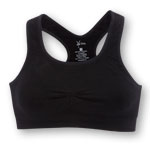 Athletic bras offer the same claims about their wicking ability. But, even after a short climb, when I reach the summit, my synthetic bra is drenched– and remains so—long after I’ve made my descent, leaving me saturated and chilled (even in the summer), for the duration of the ride.
Athletic bras offer the same claims about their wicking ability. But, even after a short climb, when I reach the summit, my synthetic bra is drenched– and remains so—long after I’ve made my descent, leaving me saturated and chilled (even in the summer), for the duration of the ride.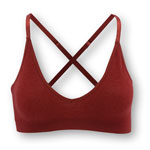
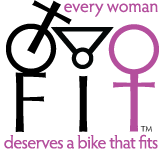


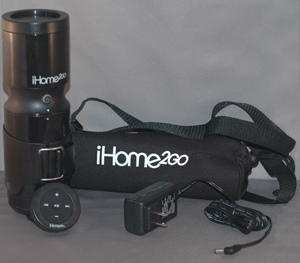

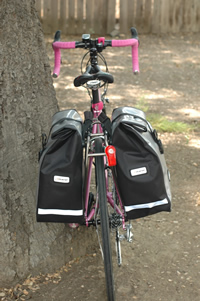
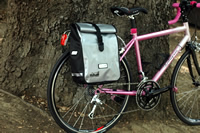 through the store instead of using a shopping cart. I won’t even have to break my loaf of French bread in half, just to get it home.
through the store instead of using a shopping cart. I won’t even have to break my loaf of French bread in half, just to get it home.